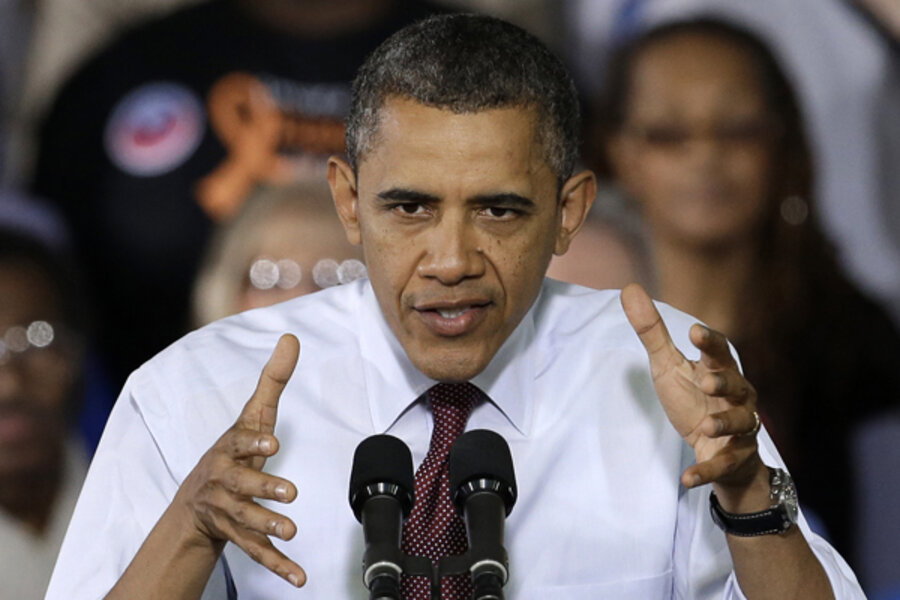Taxing the rich: why $250,000 became the benchmark
Loading...
| Washington
What is the definition of “wealthy”?
This matters, especially now, as President Obama and House Speaker John Boehner try to come to terms on a package of tax hikes and spending cuts that will keep the nation from going over the "fiscal cliff" on Jan. 1.
Over the years, Democrats have gone back and forth on the “wealth” question, as they have sought ways to raise more federal tax revenue. For a time, it was a taxable family income over $250,000 a year. Then last year, Democratic leaders – with New York Sen. Chuck Schumer leading the charge – decided it should really be $1 million. That’s a pretty big difference, no matter how you slice it.
After all, as Senator Schumer likes to point out, there are pricey neighborhoods in his state (and others), where $250,000 is a comfortable income, but hardly extravagant. The $250k threshold would also mean higher taxes on some small businesses, which is politically awkward.
“I think we feel millionaires – that’s the fairest way to go,” Sen. Barbara Boxer (D) of California told Politico in October 2011.
But then the presidential campaign kicked into gear, and Mr. Obama went back to $250,000. It was one of his mantras on the stump: The wealthiest households in America should pay modestly higher taxes on annual incomes over $250,000, the same rate they paid during the prosperous Clinton era. The million-dollar benchmark might have been easier to sell politically, but it would have meant giving up a whole lot of tax revenue – $68 billion a year, according to Bloomberg Businessweek.
For the same reason, Warren Buffett’s suggested benchmark of “maybe $500,000 or so,” as the billionaire investor wrote in The New York Times last month, also wouldn’t work.
So the $250,000 family threshold (and $200,000 for individuals) looks as locked in as Obama’s insistence that the rich pay a higher tax rate, not just that they kick in more revenue to the feds. This week, Obama lowered his revenue goal from $1.6 trillion over 10 years to $1.4 trillion, a small move toward what is expected to be a final revenue number in the $1 trillion to $1.2 trillion range.
The president’s allies on Capitol Hill are in lock step behind him on the $250k benchmark.
“I originally believed a million dollars was the right place to draw the line,” Schumer told the Monitor Thursday. “The president campaigned on $250,000, the voters ratified that, and that’s where we are.”
It’s also worth noting that the $250,000 benchmark would end up being higher than that, as the Obama administration has bent over backwards to make sure people below $250k in taxable income don’t end up paying a higher marginal rate.
A Dec. 5 report in the Times concludes that, in fact, “a large majority of families making up to $300,000 – as well as hundreds of thousands of families with even larger incomes – would not pay taxes at a higher marginal rate.”
There are multiple reasons, according to reporters Catherine Rampell and Binyamin Appelbaum.
“To guarantee that tax rates do not increase for any family making less than $250,000, the Obama administration proposed in 2009 to raise marginal rates on taxable income above roughly $230,000 – because the minimum amount of income a family is entitled to shelter from taxation is roughly $20,000,” they write. “But the average amount families in that income range are entitled to shelter from taxation is much larger, closer to $60,000. In other words, families with taxable income of $230,000 on average earned about $290,000 in 2009.”
Furthermore, they add, the administration is adjusting the numbers for inflation – that is, $250,000 in 2009 dollars. In effect, the Times reporters say, Obama is “now proposing to raise marginal rates on families with taxable incomes above $246,000 – meaning, on average, families earning more than about $305,000.”
They cite an analysis by the Tax Policy Center that says the president’s rate hike would affect only the top 1 percent of taxpayers, instead of the 2 percent Obama often cites.
Also worth noting: People below the $250,000 benchmark will be subject to other tax increases, such as those in the Affordable Care Act.






